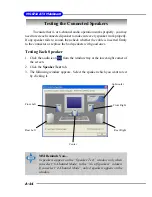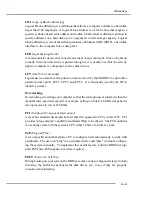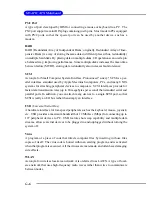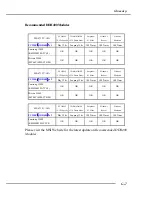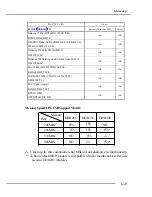
G-5
Glossary
LBA
(Logical Block Addressing)
Logical block addressing is a technique that allows a computer to address a hard disk
larger than 528 megabytes. A logical block address is a 28-bit value that maps to a
specific cylinder-head-sector address on the disk. 28 bits allows sufficient variation to
specify addresses on a hard disk up to 8.4 gigabytes in data storage capacity. Logical
block addressing is one of the defining features of Enhanced IDE (EIDE), a hard disk
interface to the computer bus or data paths.
LED
(Light Emitting Diode)
A semiconductor device that converts electrical energy into light. Since it lights up
(usually red) when electricity is passed through it, it is usually used for the activity
lights on computer’s component, such as disk drivers.
LPT
(Line Printer Terminal)
Logical device name for a line printer; a name reserved by the MS-DOS for up to three
parallel printer ports: LPT1, LPT2, and LPT3. It is frequently used by the OS to
identify a printer.
Overclocking
Overclocking is resetting your computer so that the microprocessor runs faster than the
manufacturer-specified speed (for example, setting an Intel 166 MHz (megahertz)
microprocessor to run at 200 Mhz).
PCI
(Peripheral Component Interconnect)
A local bus standard developed by Intel that first appeared on PCs in late 1993. PCI
provides “plug and play” capability and allows IRQs to be shared. The PCI controller
can exchange data with the system's CPU either 32 bits or 64 bits at a time.
PnP
(Plug and Play)
A set of specifications that allows a PC to configure itself automatically to work with
peripherals. The user can "plug" in a peripheral device and "play" it without configur-
ing the system manually. To implement this useful feature, both the BIOS that sup-
ports PnP and a PnP expansion card are required.
POST
(Power On Self Test)
During booting up your system, the BIOS executes a series of diagnostic tests, include
checking the RAM, the keyboard, the disk drives, etc., to see if they are properly
connected and operating.

